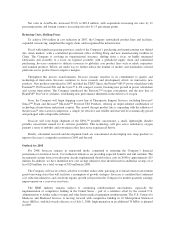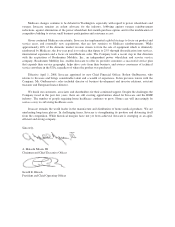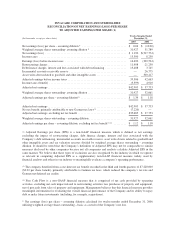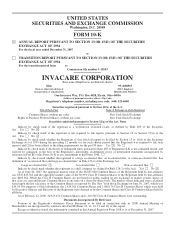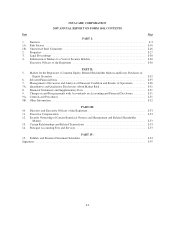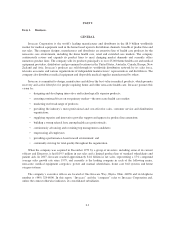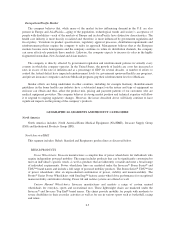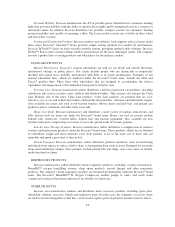Invacare 2007 Annual Report Download - page 13
Download and view the complete annual report
Please find page 13 of the 2007 Invacare annual report below. You can navigate through the pages in the report by either clicking on the pages listed below, or by using the keyword search tool below to find specific information within the annual report.Europe
As a result of the differences encountered in the European marketplace, competition generally varies from
one country to another. The company typically encounters one or two strong competitors in each country, some
of them becoming regional leaders in specific product lines.
MARKETING AND DISTRIBUTION
North America and Asia/Pacific
Invacare’s products are marketed in the United States and Asia/Pacific primarily to providers who in turn
sell or rent these products directly to consumers within the non-acute care setting. Invacare’s primary customer is
the home medical equipment (HME) provider. The company also employs a “pull-through” marketing strategy to
medical professionals, including physical and occupational therapists, who refer their patients to HME providers
to obtain specific types of home medical equipment, as well as to consumers, who express a product or brand
preference.
Invacare’s domestic sales and marketing organization consists primarily of a home care sales force, which
markets and sells Invacare®branded products to HME providers. Each member of Invacare’s home care sales
force functions as a Territory Business Manager (TBM) and handles all product and service needs for an account,
thus saving customers’ valuable time. The TBM also provides training and servicing information to providers, as
well as product literature, point-of-sale materials and other advertising and merchandising aids. In Canada,
products are sold by a sales force and distributed through regional distribution centers in Quebec to health care
providers throughout Canada.
The Inside Sales Department provides increased sales coverage of smaller accounts and complements the
efforts of the field sales force. Inside Sales offers cost-effective sales coverage through a targeted telesales effort,
and has delivered solid sales growth since its existence.
The company’s Technical Education department offers education programs that continue to place emphasis
on improving the productivity of repair technicians. The Service Referral Network includes numerous providers
who honor the company’s product warranties regardless of where the product was purchased. This network of
servicing providers seeks to ensure that all consumers using Invacare products receive quality service and
support that is consistent with the Invacare brand promise.
The company sells distributed products, primarily soft goods and disposable medical supplies, through ISG.
ISG products include ostomy, incontinence, wound care and diabetic supplies, as well as other soft goods and
disposables. ISG markets its products through field account managers, inside telesales, a customer service
department and the Internet. Additionally, ISG entered the long-term care market on a regional basis and markets
to those nursing homes utilizing a direct outside sales force. ISG also markets a Home Delivery Program to home
medical equipment providers through which ISG drop ships supplies in the provider’s name to the customer’s
address. Thus, providers have no products to stock, no minimum order requirements and delivery is made within
24 to 48 hours nationwide.
In 2007, Invacare ended its relationship with Arnold Palmer, its national spokesperson, as part of the
company’s cost-cutting initiatives. Moving forward, Invacare, through the company’s co-op advertising program,
developed new direct response television commercials designed to generate demand for Invacare Power Chairs
and the HomeFill Oxygen System sold by the home medical equipment provider in the U.S. The Company’s
North America HME Division also introduced a new marketing and advertising campaign, “Impossible Stops
Here.” The goal of this new campaign is for providers to believe that if they align themselves with Invacare—the
only company that has the right products, the right programs, and the right services—they will survive today’s
seemingly impossible industry conditions. This theme has been incorporated into all trade advertising and
I-8


